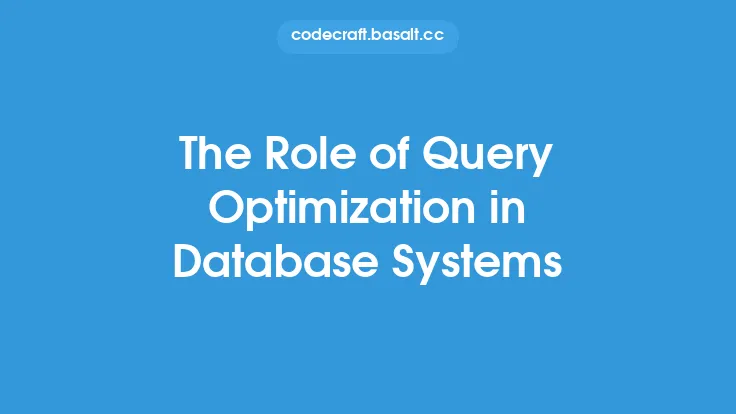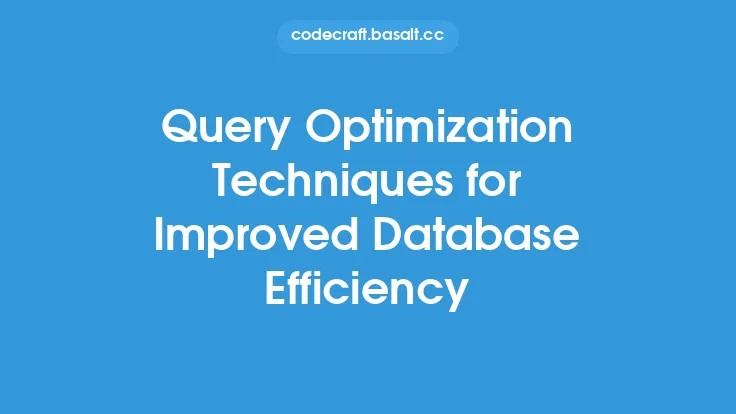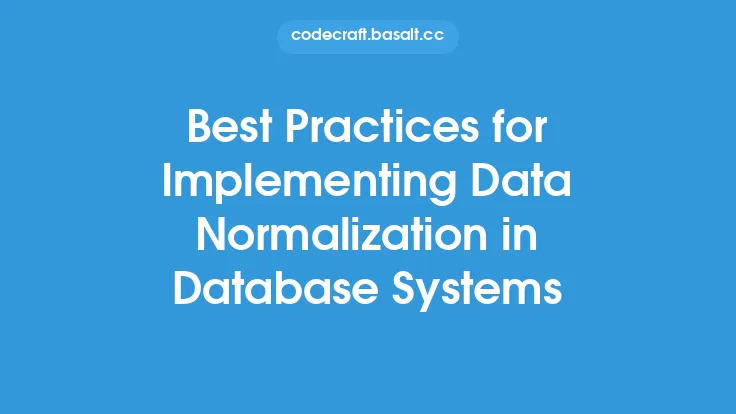When it comes to database systems, query optimization is a crucial aspect that can significantly impact the performance and efficiency of the system. Query optimization involves analyzing and improving the queries that are executed on the database to reduce the time it takes to retrieve or manipulate data. In this article, we will delve into the evergreen principles of query optimization that remain relevant and effective, regardless of the advancements in technology or changes in database systems.
Understanding the Basics of Query Optimization
Query optimization is a complex process that involves understanding the query execution plan, indexing, statistics, and other factors that affect query performance. The goal of query optimization is to minimize the time it takes to execute a query, which can be achieved by reducing the number of disk I/O operations, minimizing the amount of data that needs to be processed, and optimizing the join order and indexing. To optimize queries effectively, it is essential to have a deep understanding of the database system, including the data distribution, indexing, and query execution plans.
Principles of Query Optimization
There are several evergreen principles of query optimization that can be applied to improve query performance. These principles include:
- Selectivity: The selectivity of a query refers to the number of rows that are returned by the query. Queries with high selectivity tend to perform better than queries with low selectivity. To improve selectivity, it is essential to use indexes and to optimize the where clause to reduce the number of rows that need to be processed.
- Indexing: Indexing is a critical aspect of query optimization. Indexes can significantly improve query performance by reducing the number of disk I/O operations and minimizing the amount of data that needs to be processed. However, indexing can also have a negative impact on query performance if not used correctly.
- Statistics: Statistics play a crucial role in query optimization. The database system uses statistics to determine the optimal query execution plan. Accurate statistics can help the database system to choose the most efficient query execution plan, while inaccurate statistics can lead to suboptimal performance.
- Join Ordering: The join ordering can significantly impact query performance. The optimal join ordering depends on the size of the tables, the join type, and the indexing. To optimize join ordering, it is essential to understand the query execution plan and to use techniques such as reordering joins and using index-based joins.
Query Optimization Techniques
There are several query optimization techniques that can be used to improve query performance. These techniques include:
- Reordering Joins: Reordering joins can significantly improve query performance. The optimal join order depends on the size of the tables, the join type, and the indexing.
- Using Index-Based Joins: Index-based joins can improve query performance by reducing the number of disk I/O operations and minimizing the amount of data that needs to be processed.
- Optimizing Subqueries: Subqueries can significantly impact query performance. To optimize subqueries, it is essential to use techniques such as rewriting subqueries as joins and using index-based subqueries.
- Using Query Hints: Query hints can be used to influence the query execution plan. Query hints can be used to specify the join order, indexing, and other aspects of the query execution plan.
Best Practices for Query Optimization
To optimize queries effectively, it is essential to follow best practices. These best practices include:
- Monitoring Query Performance: Monitoring query performance is essential to identify performance bottlenecks and to optimize queries effectively.
- Using Explain Plans: Explain plans can be used to understand the query execution plan and to identify performance bottlenecks.
- Optimizing Database Design: Optimizing database design is essential to improve query performance. This includes optimizing table design, indexing, and data distribution.
- Using Query Optimization Tools: Query optimization tools can be used to analyze and optimize queries. These tools can help to identify performance bottlenecks and to optimize queries effectively.
Conclusion
Query optimization is a critical aspect of database systems that can significantly impact performance and efficiency. By understanding the evergreen principles of query optimization, including selectivity, indexing, statistics, and join ordering, and by using query optimization techniques and best practices, it is possible to improve query performance and to optimize database systems for better performance. Whether you are a database administrator, developer, or data analyst, understanding query optimization is essential to get the most out of your database system.





